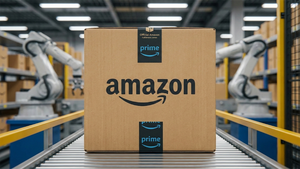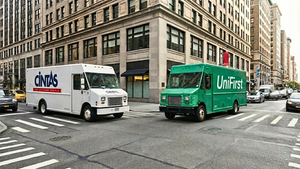The plant in Normal, Illinois, where Rivian (NASDAQ: RIVN) -5.48 percent Automotive Inc. is located, is everything but normal.
The world’s car industries are constantly producing new models. Production on Rivian’s electric trucks began eight months ago, and only recently, the business’s facility operated at full speed for a 10-hour work shift for the first time, according to company officials.
Tens of thousands of customers have placed preorders for Rivian’s electric trucks, which investors consider to be the Tesla Inc. TSLA -9.22% of trucks. Even seasoned auto executives admit that the startup’s plan to crank out three new models in short succession at its newly refurbished manufacturing is risky.
To begin, the company needs to understand the ins and outs of production, something it has struggled with thus far. Congestion in the global supply chain and escalating commodity costs for critical battery components such as nickel and lithium exacerbate the problem.
Rivian, situated in Irvine, California, raised $12 billion in its initial public offering (IPO) in November, a record amount for an IPO in the United States since 2014. In the first two months of plant production, it delivered 156 automobiles.
There was a time when the stock was trading at $179 per share. With a market worth of $160 billion, it put the firm among the most valuable automakers in the world.
Shares have recently been crushed following setbacks on the manufacturing floor in one of the worst operational conditions in the automobile industry’s recent memory. Companies cut their production target in half in March, to 25,000 cars, due to a worldwide shortage of semiconductors and other supply-chain concerns. Consumers were outraged when Rivian hiked prices on existing purchases within the same month. Personnel inexperience and the complexity of the launch have hampered production, leaving them idle for an extended time.
On 95 million dollars in sales, Rivian recorded a loss of $1.6 billion for the quarter. According to the corporation, supply-chain difficulties should be alleviated by the end of the year. With a share price of roughly $30, its market capitalization is now slightly over $27 billion.
Some of Rivian’s troubles were unavoidable, according to RJ Scaringe, the 39-year-old CEO who launched the business in 2009. When asked whether the task was simple, he said, “We’d be kidding ourselves if claimed so.” That’s why we’re here.
Investor excitement for electric-car upstarts like Rivian has risen steadily over the last two years as they intend to follow Tesla, the industry leader, into the electric vehicle market.
Despite having never manufactured or sold a single vehicle, some made an impression on Wall Street with high revenue estimates and claims to disrupt the automotive industry.
The tone has changed in recent months. High-end electric car manufacturer Lucid Group Inc. lowered its 2022 production projection by as much as 40% in February, citing supply restrictions on some components and materials. Delaying the release of its first electric-truck model, Lordstown Motors Corp. recently claimed it has to gather additional money to continue. Canoo Inc., an electric vehicle start-up, said in May that it had serious doubts about its ability to get more investment.
Rivian, unlike many others, has a healthy cash reserve of $17 billion as of the end of March. By that estimate, the company has enough cash on hand to sustain growth initiatives until 2025.
Two electric vehicles are offered by the manufacturer currently: the R1T pickup truck ($67,500) and the R1S sport utility vehicle ($72,500). One hundred thousand electric delivery vehicles will also be supplied to Amazon under a deal.
Eventually, Mr. Scaringe, who lives near the Illinois plant with his wife and three boys, says he wants his company to sell 10 million automobiles a year worldwide, equal to what Toyota does now. The $5 billion manufacturing facility will be constructed in Georgia and debut in 2024 with a single assembly line producing a smaller, more affordable electric SUV, the firm said in December.
In the first quarter of the year, Rivian manufactured roughly 2,500 automobiles. With less than a quarter of the year left, the company will need to produce over ten times as many cars at its old Mitsubishi Motors Corp. assembly factory to meet its goals for this year.
According to those acquainted with the situation, a major challenge has been coordinating the timely delivery of thousands of vehicle components from adjacent warehouses to the assembly line.
Inventory management is becoming more difficult due to delays in certain components and slower-than-anticipated assembly times, according to sources familiar with the situation. According to the workers, since the battery packs must be placed early in the assembly process, a shortage of certain metal components caused a bottleneck in the process.
According to Rod Copes, the business’s former operations head who departed in December, Rivian had problems early on persuading certain vendors to produce components in the amounts the company required. Because Rivian is genuinely building up, I believe they have greater trust with the supply chain,” he said.
Rivian uses a single machine to ensure that their cars are waterproof at the end of the production process. Finished cars were backed up earlier this year because the machine couldn’t keep up with manufacturing, according to someone familiar with operations.
That’s what Mr. Scaringe claims. There are presently just two or three days a week when the factory runs a single 10-hour shift, he added. He plans to work two shifts a day, five days a week, by the end of the year.
However, he noted, this difficulty is being alleviated in part due to the increased training of the factory’s staff.
It’s a “frustrating day” if you’re sitting line-side and waiting for a component shipment to arrive and you’re there from 11 am to 1 pm, Mr. Scaringe added. In addition, it isn’t cost-effective for us in any manner.
According to him, the issues with the waterproof testing and the lack of aluminum components for the battery packs have been remedied. Rivian had to modify a lot of aluminum components because of problems the firm had with them, according to him.
A scarcity of computer chips, according to Mr. Scaringe, has continuously slowed manufacturing. Rivian produced as many cars in the first three months of the year as it had full sets of components, he claimed.
“Of course, there are many, many obstacles,” he said. the greatest difficulty we have now is components.”
In 2018, Tesla produced more than tens of thousands of its Model 3 cars, and Rivian is hoping to follow suit in 2019.
For Rivian, the extra problem is supply-chain concerns, which Tesla did not have at the time. Ford Motor Co. and General Motors Co., who are introducing their first electric pickups, will also be competitors for Nissan’s R1T vehicle.
Since production started in early April, Ford has constructed more Lightning electric F-150 trucks than Rivian has made in the first quarter of the year.
Even for seasoned automakers, manufacturing a new car is an error-prone endeavor. In the last two years, high-profile launches by Ford and GM, notably the introduction of new variants of Ford’s Bronco SUV and GM’s Corvette sports vehicle, have revealed quality flaws or components restrictions.
It was in December that Rivian moved back its intentions to provide vehicles with a driving range of at least 400 miles on a single charge until 2023. A front passenger airbag may not deploy correctly if a seat assembly calibration issue is found, Toyota said in a May recall of nearly 500 pickup vehicles.
Scaringe and a swarm of excited workers opened the Nasdaq Stock Exchange the morning of Rivian’s IPO in November, but the company’s stock price has fallen since then. After Ford, an early investor in Rivian sold 8 million shares in May, the price fell to an all-time low of $19.25. Toward the end of the week, Ford sold an additional 7 million shares.
Jeff Schuster, head of global forecasting at research company LMC Automotive, says that startups already have a significant disadvantage over established automakers. Young firms are having a tougher time finding remedies like arranging up backup suppliers since supply chains are turbulent, according to him.
“Managing your supply chain in this climate is beyond tough if you’re a startup without any actual scale,” Mr. Schuster said.
When it comes to moving from a prototype to mass manufacturing, Mr. Musk says the difficulties are underestimated.
“Overwhelmingly, the challenge with vehicles is manufacturing,” Mr. Musk said at the Financial Times’ Future of the Car symposium in May. In my opinion, it’s 99 percent of the challenge.
More than a decade ago, while still residing in Florida, Mr. Scaringe, a mechanical engineer, and MIT Ph.D. holder, developed Rivian.
While initially focusing on hybrid coupes and sports cars in the early stages of the company, it eventually shifted to an all-electric portfolio of trucks and SUVs, both of which are huge moneymakers for automakers.
Rivian’s popularity with consumers and critics continues to grow. At the beginning of May, Rivian had roughly 90,000 R1 preorders. The R1T, which has a driving range of more than 300 miles and is geared for adventurers, has received positive reviews, including an option for a $5,000 built-in camp stove.
Additionally, Mr. Scaringe said he constantly watches other difficulties, such as the supply of lithium for batteries, or stepping in to lead the software team when Rivian lost its chief technology officer.
In the last several months, Mr. Scaringe has brought in several experienced manufacturing executives to help guide the firm in the right direction. A former Nissan production manager in Canton, Mississippi, Tim Fallon was recruited by Rivian. He also brought in a new second-in-command, Magna International’s contract-manufacturing arm chief Frank Klein.
It has been one of Mr. Scaringe’s toughest challenges to have Rivian’s aggressive production objectives accepted by the company’s suppliers. In the last several months, he claims, he’s made some progress since output has gone up.
The post The Fate Of Automobile Companies In Times Like This appeared first on Best Stocks.




